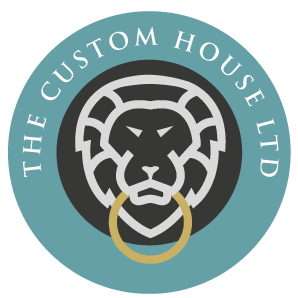A brief guide to customs clearance
Customs clearance is the process of declaring goods as they move through a border, whether importing or exporting. This is so that HM Revenue & Customs can gather statistical data on the country’s imports and exports, ensure that goods are travelling with the required licenses and certification and collect any taxes that are due on the goods concerned.
Customs clearance is also required when moving suspended goods outside of a customs-designated area, such as a bonded warehouse, or when cancelling an inward processing relief. This is because the goods have not yet been released into free circulation, and so another declaration is needed to pay the taxes or declare that the goods are moving to another location.
What documents do I need for UK customs clearance?
To process your declaration to customs, your customs broker will need to have a copy of the following documentation for each shipment:
· Commercial invoice.
· Packing list.
· Transport document – e.g. bill of lading or airway bill.
If the following information is not on any of the documents, then these will also be required for clearance:
· Tariff classification.
· Any factors that impact on the value of the goods.
· The country of origin and whether a free trade agreement might apply..
Depending on the tariff classification, further documentation may be required for UK customs clearance, including but not limited to:
· Certificate of Origin.
· Health certificates.
What value do I need to declare to customs?
UK customs clearance requires the value of the goods to be determined and declared. This means the cost of the goods, freight, and insurance at the time of crossing the border. Depending on which Incoterms® have been used, this may be the amount on the commercial invoice, i.e. CIF. If an alternative term has been applied, the value is will need to be adjusted.
What are the routes of UK customs clearance?
Import customs clearances are processed through different routes, depending on the commodity, the procedure or random checks. The following are the most common routes for live declarations:
· Route 6 - This is a straightforward clearance and will proceed to clear as soon as taxes and any additional checks from border authorities are complete.
· Route 1 - This requires that your documentation be sent to the National Clearance Hub for checks before they process the clearance.
· Route 3 – This is a combination of route 1 and route 6, where the clearance is not postponed but the documents must be sent to NCH for checks.
· Route 2 – This is an indication that customs require physical examination of your goods, as well as a documentation check.
What is proof of customs clearance?
Once your customs broker submits your declaration, they will be issued with a C88 and an E2 (or an X2 if you are exporting) to show that the live declaration has been accepted. Depending on the route of the declaration, the goods will then be cleared provided all the conditions have been met:
Import:
Import duty and VAT have been accounted for.
Port health and/or customs examinations have been completed and cleared.
Export:
The consignment reference has been tied to the export manifest by the carrier.
Where is customs clearance needed?
Customs clearance is needed whenever goods passing through a border from one customs territory to another, e.g. from the UK to the EU, but not within the EU from France to Germany. In addition, they are required when they are leaving a customs authorised facility if the goods are not in free circulation, i.e. a bonded warehouse
Do I need to use a customs broker?
A customs broker is not required for your customs clearance. However, it is recommended that you use one due to setup costs and expertise. UK customs clearance agents are likely to have access links to lots of ports of entry (which have a cost per port), customs clearance software (another cost) and the expertise to ensure that your declarations are processed correctly (another cost and training time).
For these reasons, using a customs broker is likely to save you time and money over processing UK customs clearances yourself.
What is a tariff classification?
All goods are assigned a tariff classification, which notifies the customs authorities what goods are crossing the border. In the UK, this is a ten-digit code on import. At export, it is the same code with the last two-digits omitted.
The tariff classification determines the amount of duty and VAT paid, whether additional licenses are required or if additional border checks are required.
How do I pay duty and VAT?
Duty and VAT are payable to customs by individual bank transfer, a prepaid FAS account, via a by deferment account or, in the case of VAT, delayed and accounted for in the company’s VAT return.

